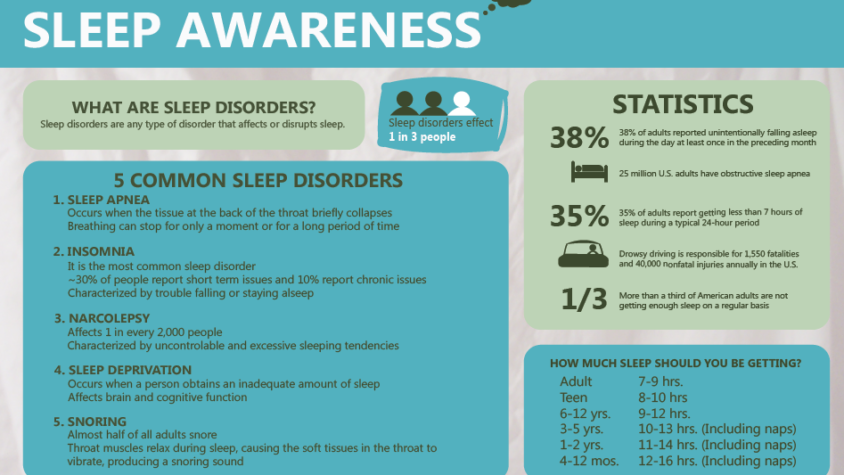By Tehniyet Azam According to Mayo Clinic sleep apnea is potentially serious sleep disorder in which breathing repeatedly stops and starts. The three main types of sleep apnea are: • Central sleep apnea • Obstructive sleep apnea • Complex sleep apnea syndrome Symptoms: The signs and symptoms o...
By Tehniyet Azam
According to Mayo Clinic sleep apnea is potentially serious sleep disorder in which breathing repeatedly stops and starts.
The three main types of sleep apnea are:
• Central sleep apnea
• Obstructive sleep apnea
• Complex sleep apnea syndrome
Symptoms:
The signs and symptoms of obstructive and central sleep apnea overlap, making the type of sleep apnea difficult to determine. Common signs and symptoms of sleep apnea include:
• Loud snoring
• Episodes of breathing cessation during sleep witnessed by another person
• Abrupt awakenings accompanied by shortness of breath, which more likely indicates central sleep apnea
• Awakening with a dry mouth or sore throat
• Morning headache
• Difficulty staying asleep (insomnia)
• Excessive daytime sleepiness (hypersomnia)
• Attention problems
• Irritability
Risk factors
• Excess weight. People who are obese have four times the risk of sleep apnea that people who are of normal weight. Fat deposits around upper airways may obstruct breathing.
• Use of alcohol, sedatives or tranquilizers.
• Nasal congestion. Difficulty breathing through your nose, whether from an anatomical problem or allergies, could result in obstructive sleep apnea.
• Stroke. People who’ve had a stroke are at greater risk of central sleep apnea.
• Heart disorders. People with congestive heart failure are at greater risk of central sleep apnea.
• Smoking. Smokers are three times more likely to have obstructive sleep apnea than people who’ve never smoked.Smoking may increase the amount of inflammation and fluid retention in the upper airway. This risk likely drops after you quit smoking.
• Being male. Men are twice as likely to have sleep apnea. However, women’s risk appears to rise after menopause.

